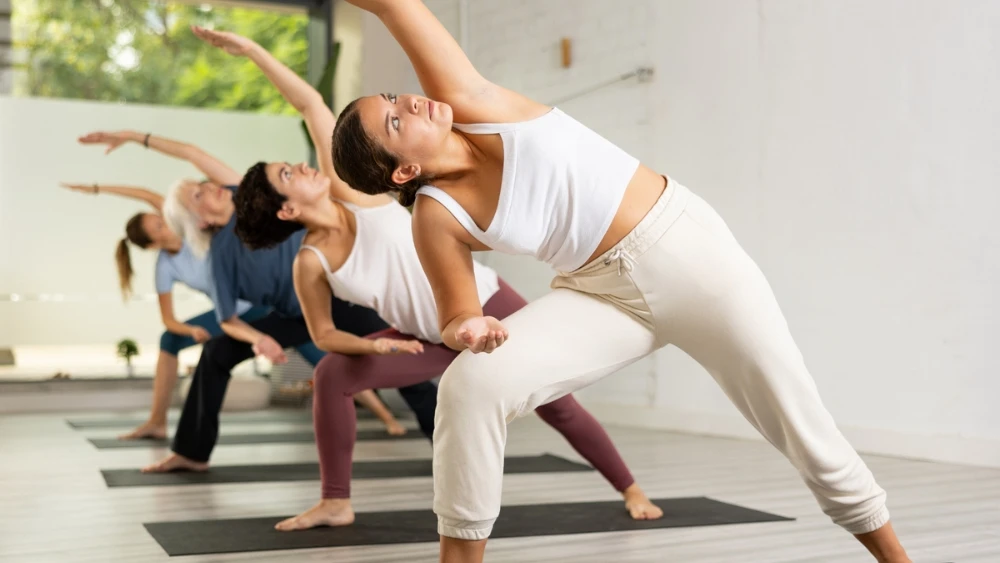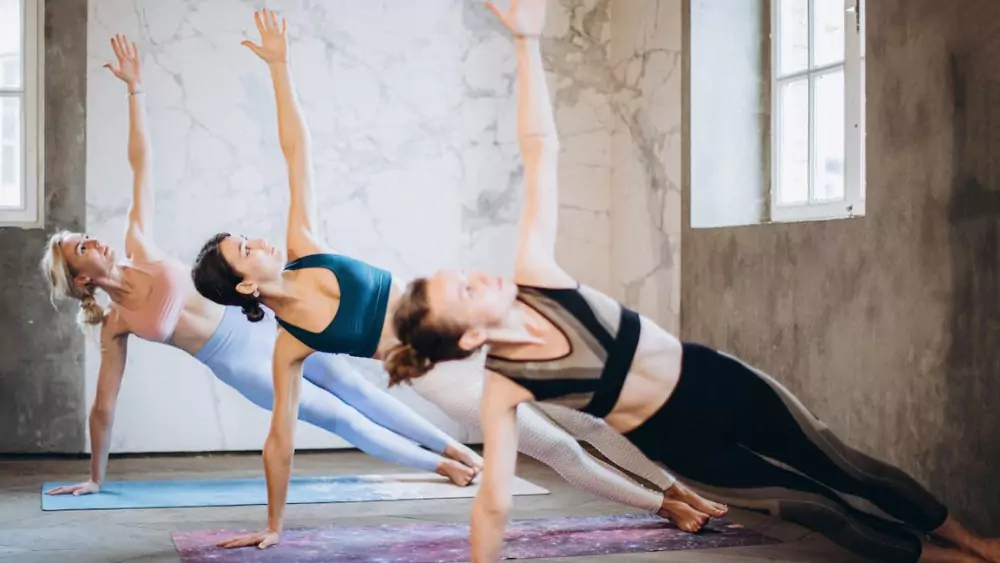
Solo yoga is grounding. Duo yoga builds trust. But yoga poses for 3? That’s where the magic happens.
Suddenly, solo meditation is a shared adventure. Downward dogs turn into trust falls, and chair poses become a lesson in leaning (literally) on your crew.
Whether you’re a parent-kid trio, a friends squad, or partners craving connection, three-person yoga poses promise more than just a stretch. They fuel connection, fire up your core, and make you laugh mid-pose.
Trio yoga poses are great for building connection, balance, and flexibility. Start with the easy ones and work your way up as your trust and coordination improve.
Top 5 Easy-to-Difficult Yoga Poses for Three Persons
This blog post lists five asanas (from beginners to “how did we even do that?!”) that prove why group hugs belong on the mat.
1. Triple Seated Forward Fold (Warmup Pose)
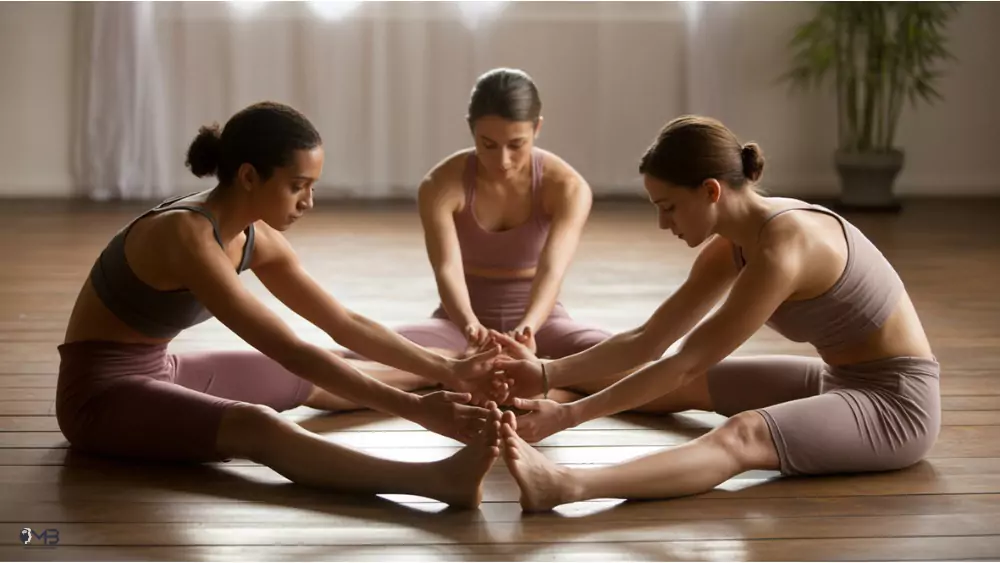
- Difficulty Level: 2/10
- Key Focus: Flexibility, trust, connection
How To Do It?
- Sit in a triangle, facing inward with legs stretched out and feet meeting in the middle.
- Everyone joins hands with those close to them, making a circle of connected arms and legs.
- On an inhale, all three sit up straight and extend their spines.
- On exhale, one folds forward while two gently support. Breathe and lean in.
2. Triple Tree Pose
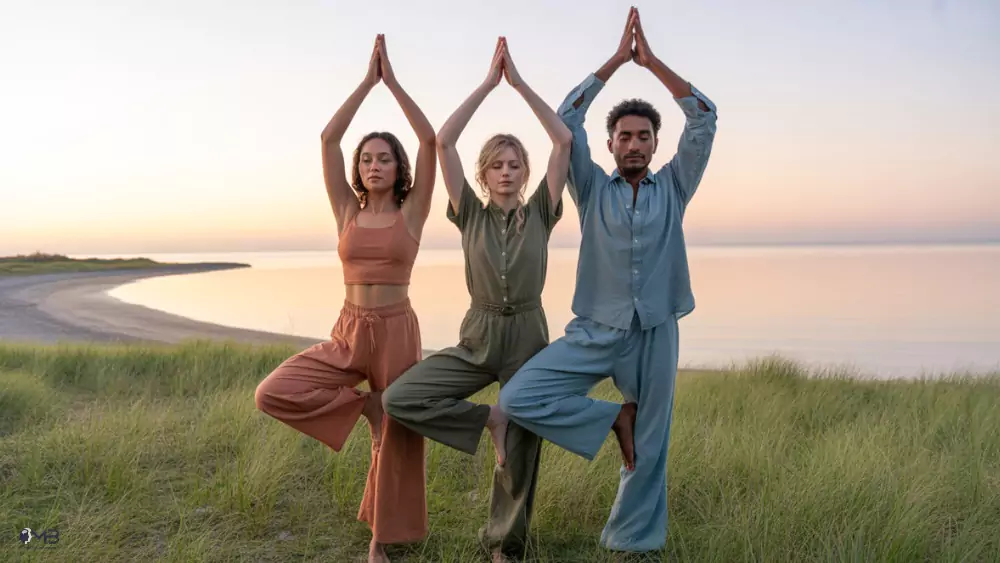
- Difficulty Level: 3/10
- Key Focus: Balance, teamwork
How To Do It?
- Stand in a tight triangle or line formation.
- Each person lifts the inside leg and places the sole of the foot against the inner thigh or calf of the standing leg (avoid the knee).
- Raise your inside arms to touch palms or link elbows with neighbors for stability.
- Press your lifted foot into your standing leg to stay steady. Breathe deep and hold for 5–7 breaths.
3. Circle of Trust Pose (Chair Pose Variation)
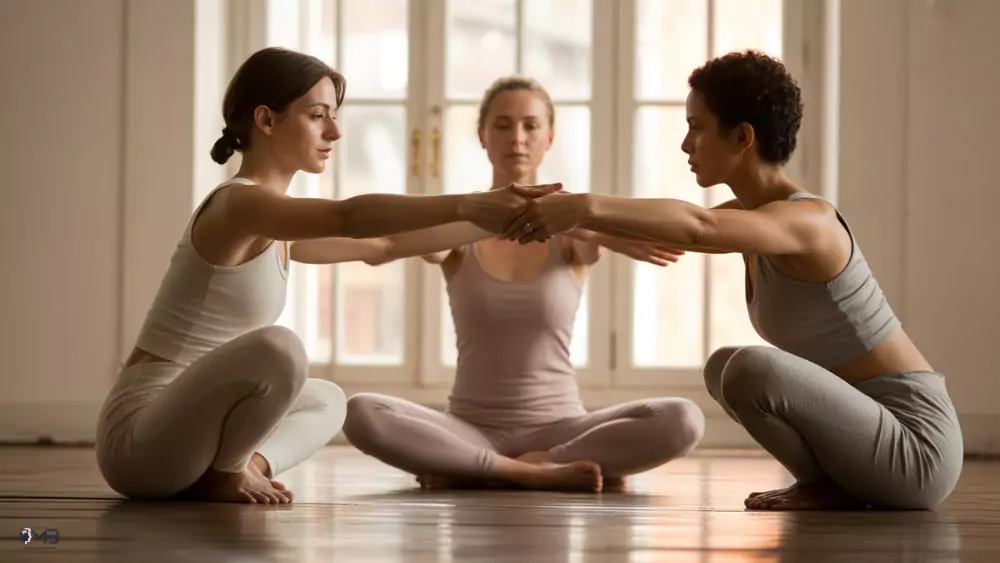
- Difficulty Level: 5/10
- Key Focus: Balance, strength, teamwork
How To Do It?
- First of all, stand in a triangle, facing inward, feet shoulder-width apart.
- Each person grabs the wrists of the person on either side, creating a strong human chain.
- On three, everyone slowly sits down like they’re in a chair, backs straight, thighs parallel to the floor.
- Share your weight evenly, hold on to each other for balance, stay steady for 5–10 seconds, then lift up slowly together.
4. Downward Dog Pyramid
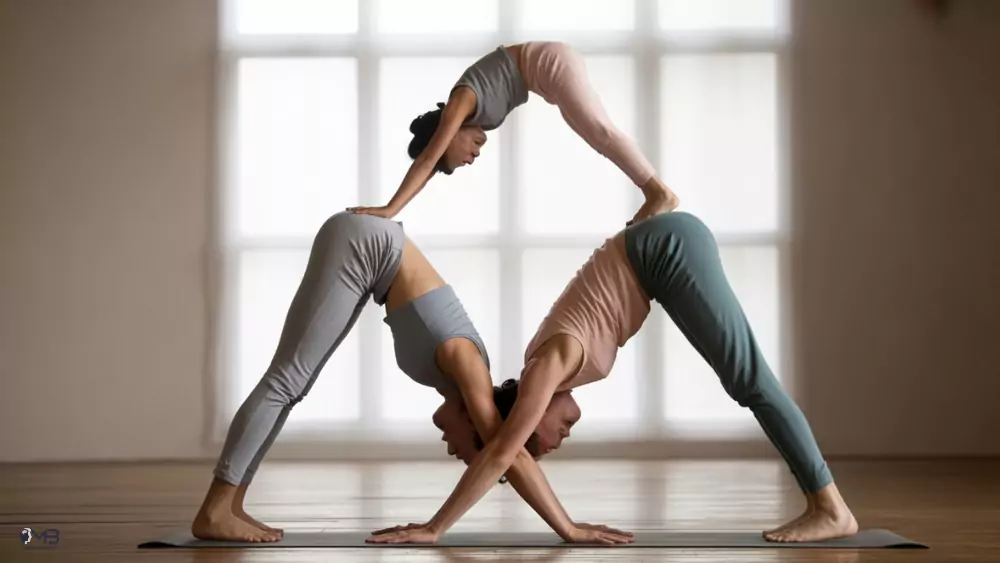
- Difficulty Level: 6/10
- Key Focus: Stretch, coordination
How To Do It?
- Person A (Base) gets into Downward-Facing Dog, pressing hands and feet down and lifting hips up high.
- Person B places hands in front of Person A’s and rests feet on their back, making a reverse “V.”
- Person C puts their hands in front of Person B’s and climbs up, resting their feet on Person B’s back.
- Once you’re steady, hold the pose for 3–5 breaths and stay aligned.
- Carefully dismount in reverse order, with support.
Safety Note You Must Know: Always use a yoga mat. The base should keep its spine straight and stay strong to avoid getting hurt.
5. Double-Side Star
- Difficulty Level: 9/10
- Key Focus: Balance, core strength, symmetry, and trust
How To Do It?
- One person (the base) lies flat on their back, knees bent slightly, and arms extended upward.
- The two flyers stand on each side of the base, facing each other.
- Each flyer places their inner hand in the corresponding hand of the base.
- The flyers place their outer hand on the ground, just ahead of their shoulder, to start flipping upside down.
- One by one, the flyers lift their hips and kick their outer leg up into the air, followed by the second leg, creating a wide inverted “V” shape.
- Both the flyers keep their heads close together to form a central point above the base’s chest.
- The base engages their core and grip to help stabilize the flyers.
- Flyers use their shoulders, core, and legs to stay steady. Their legs stay straight and stretch out at an angle, copying each other.
- Hold the pose, breathe steadily, and stay in sync.
- To get down, each flyer lowers one leg at a time, uses their outer hand for balance, and lands gently.
- The base gently releases hand grips after ensuring both flyers have landed safely.
Disclaimer: Like Kundalini yoga that’s dangerous if not handled properly, some advanced poses require proper control and experience. In that case, you might consult a professional to avoid any serious injury.
Conclusion
Acroyoga turns “me time” into “we time.” It blends stretches with storytelling and balance with belly laughs. It’s a reminder that growth happens when we lean on others (literally and figuratively). Trio yoga is not about perfection but about showing up, messing up, and high-fiving your way through it all. So, grab your crew, unroll those mats, and let the adventure begin.

